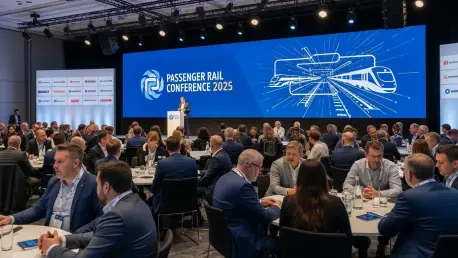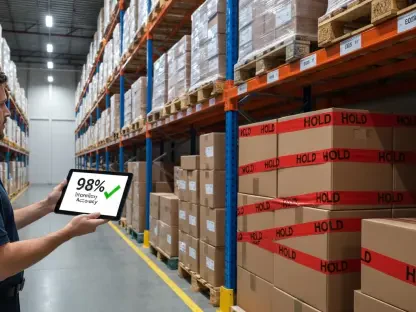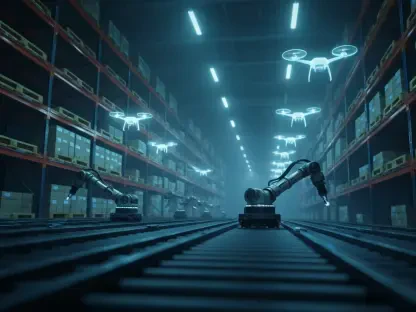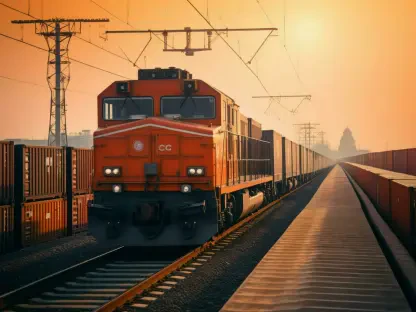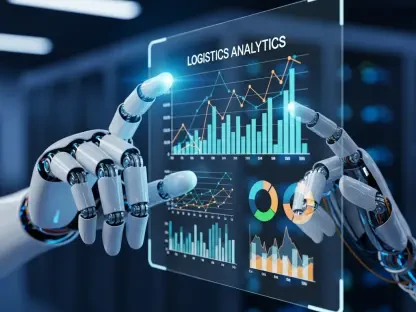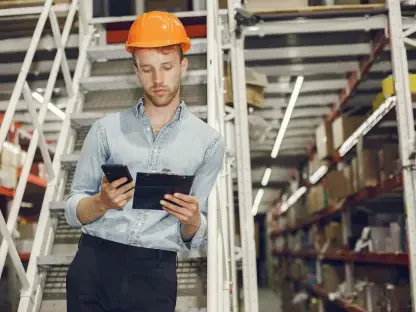Every day, millions of commuters and travelers across North America face the challenges of congested highways, rising fuel costs, and the pressing need for sustainable transport options, making passenger rail a vital solution. Amid this backdrop, rail promises reduced emissions and efficient mobility, and the Rail Users’ Network (RUN) 2025 Fall Conference, held online on November 14, serves as a critical platform to explore the future of this essential industry. Marking 25 years of advocacy, this event brings together diverse voices from rail advocates, industry leaders, and community stakeholders to discuss innovations, challenges, and opportunities. This roundup gathers insights from various perspectives shared at the conference, comparing opinions on key issues and highlighting actionable ideas for advancing passenger rail.
Setting the Stage for Rail’s Evolving Landscape
The RUN 2025 Fall Conference stands as a milestone, celebrating decades of efforts to enhance passenger rail and transit systems in the United States and Canada. Hosted virtually, the event draws a wide audience, including civic leaders, environmentalists, and rail enthusiasts, all united by a shared goal of improving rail services. Discussions focus on urgent needs like infrastructure upgrades and sustainable transport solutions, reflecting broader societal demands for greener alternatives.
A central theme of the conference is the growing momentum behind rail as a remedy for urban congestion and environmental concerns. With highways often gridlocked and carbon emissions a pressing issue, the push for reliable train networks has never been stronger. This roundup delves into the major topics covered, from equipment shortages to industry mergers, offering a comprehensive look at the diverse opinions shaping rail’s trajectory.
Core Discussions and Varied Perspectives
Freight Rail Mergers: Balancing Cargo and Passengers
One of the most debated topics at the conference centers on the proposed merger between Union Pacific and Norfolk Southern, two major freight railroads. Economic analysts express concern that such consolidation could prioritize freight operations over passenger services, potentially disrupting Amtrak and regional routes. The fear is that shared tracks might see reduced availability for trains carrying people, impacting reliability.
On the other hand, some regional advocates suggest that mergers could streamline operations, possibly freeing up resources for passenger rail if managed with clear regulations. They argue that efficiencies gained from combined freight networks might indirectly benefit transit systems. However, labor representatives caution against potential job losses and diminished service quality, highlighting the need for protective policies to safeguard workers and riders alike.
The divergence in views underscores a broader tension: how to ensure that freight consolidation does not sideline passenger needs. While economic benefits are acknowledged, the consensus leans toward advocating for strict oversight to maintain a balance. This issue remains a focal point for future policy debates within the rail sector.
Amtrak’s Equipment Challenges: Modernization in Focus
Amtrak’s aging fleet, with some cars approaching half a century in service, poses a significant barrier to maintaining robust operations. Industry observers at the conference note that equipment shortages have already led to shorter trains on certain routes, limiting capacity and passenger comfort. The urgency for new rolling stock is a widely shared concern among stakeholders.
Strategies for fleet renewal are met with cautious optimism, as timelines for procurement and delivery are outlined during the event. Some experts emphasize that modern equipment could transform the rider experience, boosting ridership through improved reliability and amenities. Yet, there’s acknowledgment of the financial and logistical hurdles that could delay these upgrades, risking further service constraints.
A key takeaway from these discussions is the need for accelerated investment to address this crisis. While opinions vary on the pace of modernization, there’s agreement that without swift action, Amtrak’s ability to meet growing demand will falter. This challenge calls for coordinated efforts between government and private entities to prioritize funding.
Rail Expansion Projects: Regional Growth and Hurdles
Across North America, new rail initiatives signal a promising trend toward enhanced transit networks, a topic generating significant buzz at the conference. Projects like Phoenix’s light rail extension and Colorado’s Front Range Passenger Rail plan, targeting service by 2029, are hailed as models of urban and regional connectivity. Proponents view these as vital steps to reduce car dependency.
However, not all projects receive unanimous support, with some facing skepticism due to funding uncertainties and local opposition. For instance, Honolulu’s Skyline project draws mixed reactions, with critics pointing to cost overruns, while supporters highlight its potential to ease traffic in a densely populated area. Similarly, New York City’s Interborough Express sparks debate over its scope and impact on existing transit.
These contrasting perspectives reveal the complexity of expanding rail infrastructure in diverse geographic contexts. While enthusiasm for growth is evident, the discussions underscore the importance of aligning public support with financial backing. Balancing ambition with practicality emerges as a recurring theme in shaping successful rail projects.
Inclusivity in Rail Advocacy: Broadening the Conversation
A strong emphasis on accessibility and sustainability shapes the conference’s vision for rail’s future. Voices from youth groups, environmentalists, and disability advocates stress that train systems must cater to all demographics to be truly effective. This perspective pushes for designs that accommodate varied needs, from wheelchair access to eco-friendly operations.
Differing views arise on how to achieve these goals, with some stakeholders advocating for sweeping policy reforms to enforce inclusivity standards. Others focus on grassroots efforts, suggesting that community input should drive changes in rail planning. Environmental advocates, meanwhile, link accessibility to broader goals like cutting carbon emissions through expanded transit use.
The dialogue highlights a shared commitment to making rail a cornerstone of equitable transport, though approaches vary. Bridging these ideas into actionable frameworks remains a challenge, but the conference serves as a catalyst for uniting diverse groups. This focus on inclusion is seen as essential for long-term advocacy success.
Key Insights and Actionable Outcomes
Reflecting on the conference, several critical insights stand out from the array of opinions shared. The urgency of addressing Amtrak’s equipment shortages and the potential disruptions from freight mergers are common concerns, with most agreeing on the need for robust federal support. Rail expansion projects, while promising, require careful navigation of funding and public sentiment to succeed.
Practical steps forward include stronger lobbying for infrastructure investments and active participation in local rail initiatives. Stakeholders are encouraged to engage in policy discussions surrounding mergers, ensuring passenger services are not overlooked. Joining advocacy groups like RUN or attending similar events offers additional avenues to influence rail’s direction.
Reflecting on a Pivotal Moment for Rail
Looking back, the RUN 2025 Fall Conference provided a dynamic forum for dissecting the complexities of passenger rail in North America. The clash of perspectives—from economic analyses to community-driven priorities—enriched the dialogue, painting a nuanced picture of the industry’s challenges and potential. It was a moment to assess both progress and persistent gaps.
Moving ahead, stakeholders should focus on forging partnerships between public and private sectors to secure funding for modernization and expansion. Exploring innovative financing models, such as public-private collaborations, could unlock resources for critical projects. Additionally, amplifying rider voices in policy arenas ensures that rail evolves as a truly inclusive mode of transport, paving the way for a more connected future.
